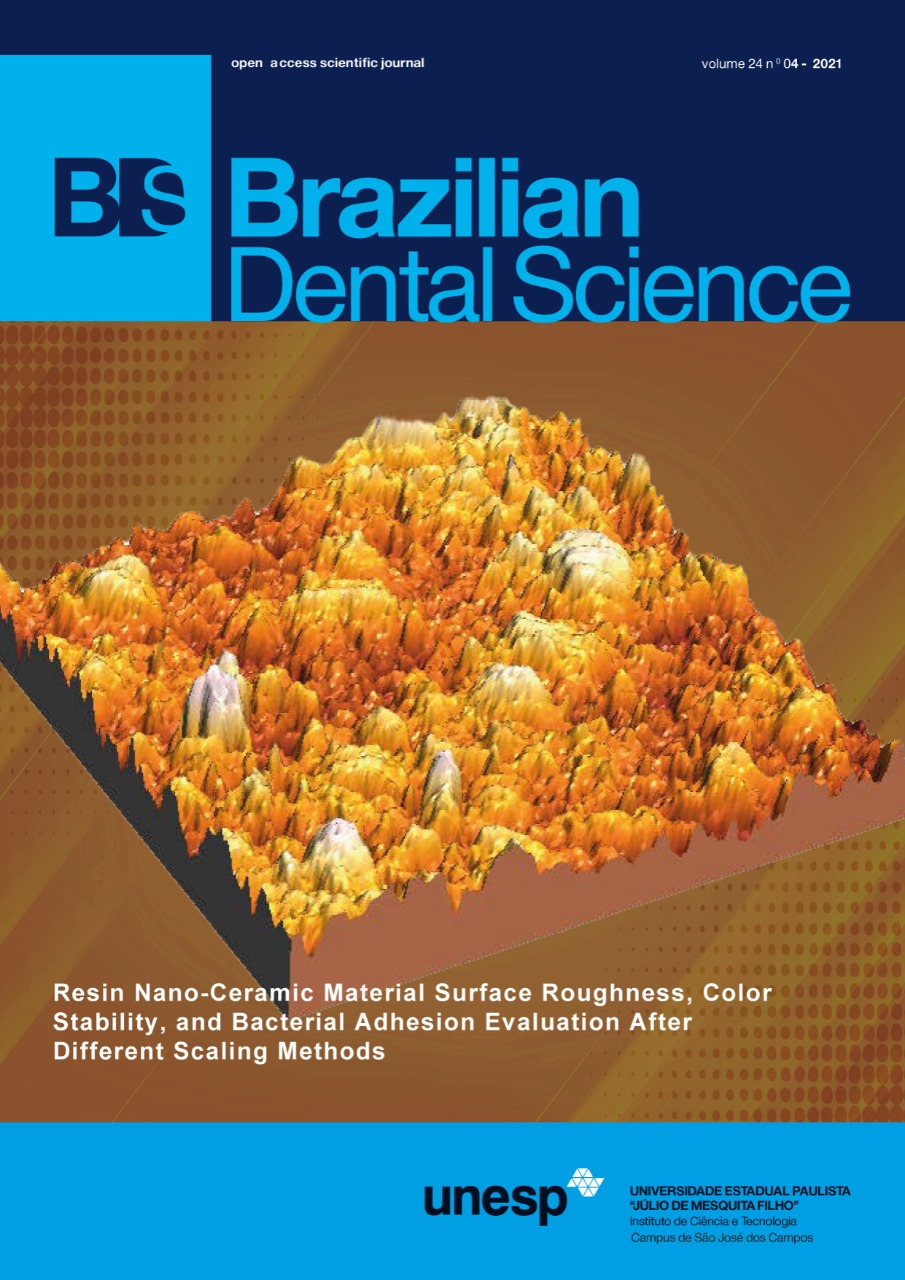Randomized comparative study in the treatment of oral leucoplakia with laser and conventional surgery
DOI:
https://doi.org/10.14295/bds.2021.v24i4.2566Abstract
Objective: High-energy lasers are used as an alternative to surgical treatment of potentially malignant disorders in the oral cavity. The present article aims to make a prospective randomised comparative clinical assessment of the effect of laser surgery and conventional surgery in the treatment of oral leukoplakia (OL). Materials and methods: In the study were included 89 patients with histologically confirmed oral leukoplakia lesions. Laser excision of the lesions using Er YAG laser was performed in 36 of the patients, while standard surgical excision was used in 53 of the cases. Following clinical assessment comparing the two treatment methods was conducted based on: pain, wound healing, infection and recurrence of the lesions. Results: A statistically significant difference between two groups according pain in the postoperative period was found. Patients treated with laser ablation experienced far less pain than those treated with surgical excision. The healing time was significantly faster in the group treated with Er YAG laser, and regarding the occurrence of postoperative infections, the results of the two methods did not differ significantly. Recurrence was observed earlier in the group treated with laser ablation, but the levels align over a longer period of time. Conclusion: Er YAG laser ablation is a contemporary method for the treatment of oral leukoplakia without dysplasia, providing similar success, compared to conventional surgical excision, with less postoperative discomfort for the patients.
Keywords
Er YAG laser; Leukoplakia; Potentially malignant disorders.
Downloads
Downloads
Published
How to Cite
Issue
Section
License
Brazilian Dental Science uses the Creative Commons (CC-BY 4.0) license, thus preserving the integrity of articles in an open access environment. The journal allows the author to retain publishing rights without restrictions.
=================




























